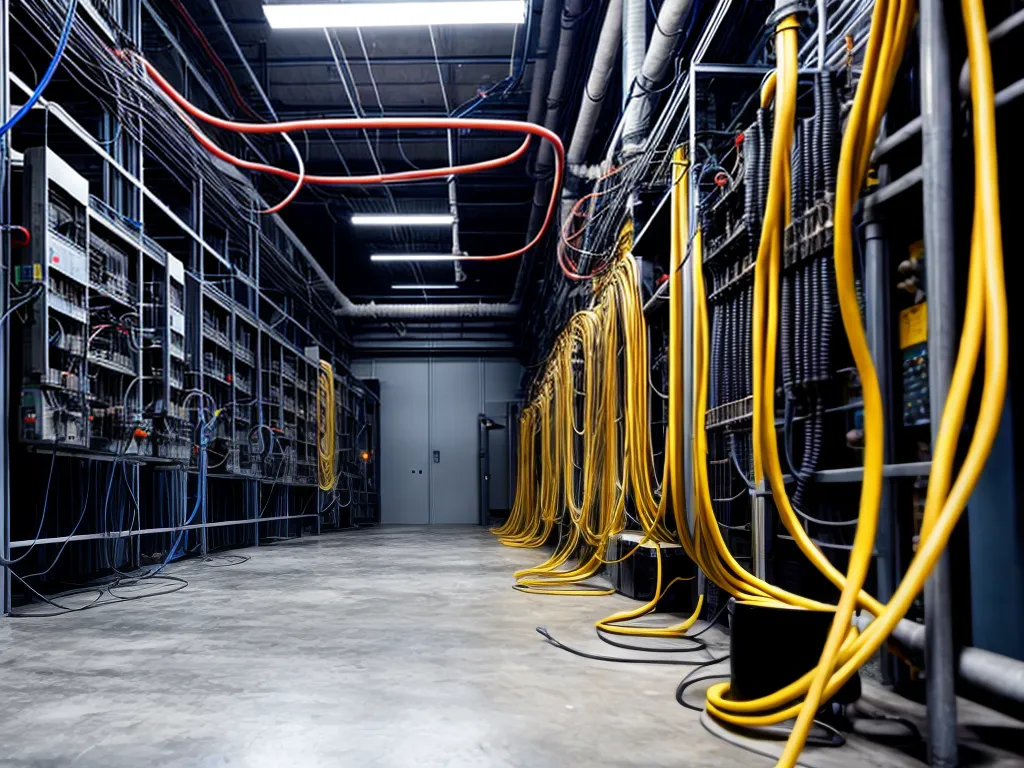
Updating Obsolete Wiring in Industrial Facilities
Introduction
Upgrading electrical systems in industrial facilities is crucial for safety, productivity, and sustaining operations. However, it can also be a complex and expensive undertaking that requires careful planning and execution. In this article, I will provide an in-depth look at the key considerations around modernizing electrical wiring in industrial settings.
Assessing the Current System
The first step is conducting a thorough evaluation of the existing electrical system:
-
Inventory all electrical equipment, wiring, and components on site. Document ages, conditions, and specifications.
-
Load analysis - Calculate current and projected electricity demands. Identify overload risks.
-
Power quality - Check for voltage fluctuations, harmonics distortion, and other issues.
-
Safety and code compliance - Check for damage, improper installations, and violations. Consult local codes and standards.
-
Reliability - Assess failure rates, redundancy levels, and backup systems.
-
Efficiency - Evaluate energy usage, loss, and opportunities to improve.
This assessment provides crucial data to plan appropriate upgrades. I retained a qualified electrical engineering firm to conduct a detailed site evaluation.
Key Benefits of Upgrading
Modernizing outdated electrical systems provides significant benefits:
-
Safety - Eliminate hazards from deteriorated wiring and equipment. Meet current safety and fire codes.
-
Reliability - Outages and fluctuations can halt critical processes. New systems lower failure risks.
-
Productivity - Avoid costly downtime. Meet capacity needs for current and future operations.
-
Energy efficiency - New wiring, lighting, motors and devices can optimize energy usage.
-
Maintenance - Old systems require more upkeep. New technology is less maintenance-intensive.
-
Compliance - Meet certification, regulatory, and insurance requirements with up-to-date systems.
Quantifying these benefits builds a strong business case for upgrading projects.
Prioritizing and Staging the Upgrades
Comprehensive electrical modernization is complex and usually impractical to complete all at once. Prioritize upgrades based on:
-
Safety - Hazards and code violations get top priority
-
Necessity - Elements directly supporting critical operations
-
Cost-effectiveness - Quick payback on investment
-
Future plans - Changes in capacity, equipment, or processes
Stage projects over time. Address urgent needs first, then phase in other elements as feasible. Some strategies include:
-
Upgrade one zone or subsystem at a time
-
Do urgent repairs first, larger upgrades later
-
Coordinate with other facility upgrades
-
Pursue rebates and incentives at optimal times
Careful prioritization and staging makes upgrades more manageable. Discuss plans with internal stakeholders and contractors.
Key Elements to Upgrade
Typical electrical overhaul projects include these key elements:
Wiring
-
Replace old, damaged wiring with new conduit and cables sized for current loads and future growth. Use flame-retardant insulation.
-
Improve wiring layouts and separations. Comply with codes for hazardous areas.
-
Install separate circuits for equipment instead of daisy-chained wiring. Enables isolation during maintenance.
-
Provide dedicated neutral wires for all circuits. Eliminates shared return paths.
Switchgear and Distribution
-
Install new main service panel, transformers, and distribution panels with increased capacity. Include individual circuit breakers.
-
Use arc flash resistant switchgear. Protect personnel.
-
Add redundancy at the power source and distribution levels. Limit potential outages.
Lighting
-
Install efficient new LED fixtures with occupancy controls.
-
Provide better task and area lighting where needed while still improving efficiency.
-
Add emergency egress lighting with backup battery packs.
Backup Power
-
Provide new backup generators to supply critical loads if main power fails.
-
Install local UPS systems to protect key equipment.
Monitoring and Control
-
Install power metering and monitoring systems. Optimize usage.
-
Implement industrial-grade lightning protection. Prevent voltage spikes.
-
Add grounding and surge protection systems.
Managing Costs
The costs of electrical upgrades can be substantial. Ways to manage expenses include:
-
Prioritize - Focus first on the most critical needs
-
Staged approach - Spread investments over time
-
Alternative funding - Leasing, performance contracts, grants
-
Rebates and incentives - Leverage utility and state/federal programs
-
Scaled design - Right-size systems to meet needs cost-effectively
-
Coordinated upgrades - Combine electrical overhaul with other projects
-
Energy efficiency - Lower operating costs offset project costs
A well-planned, phased upgrade program can modernize electrical systems while aligning costs with budgets and operational needs.
Executing the Upgrade Projects
To ensure successful execution:
-
Work with qualified, specialized electrical contractors experienced in industrial settings
-
Create detailed requests for proposals and project plans
-
Implement strong project management and oversight
-
Validate contractor qualifications, licenses, bonding and insurance
-
Use fixed-price contracts to control costs
-
Minimize downtime by scheduling shutdowns and cutovers carefully
-
Provide temporary power if needed during changeovers
-
Confirm code compliance, testing, and inspection
-
Provide staff safety training for any new equipment or power configurations
With proper planning and management, facilities can upgrade obsolete electrical systems efficiently and economically. The improvements in safety, reliability, productivity and efficiency are well worth the investment.